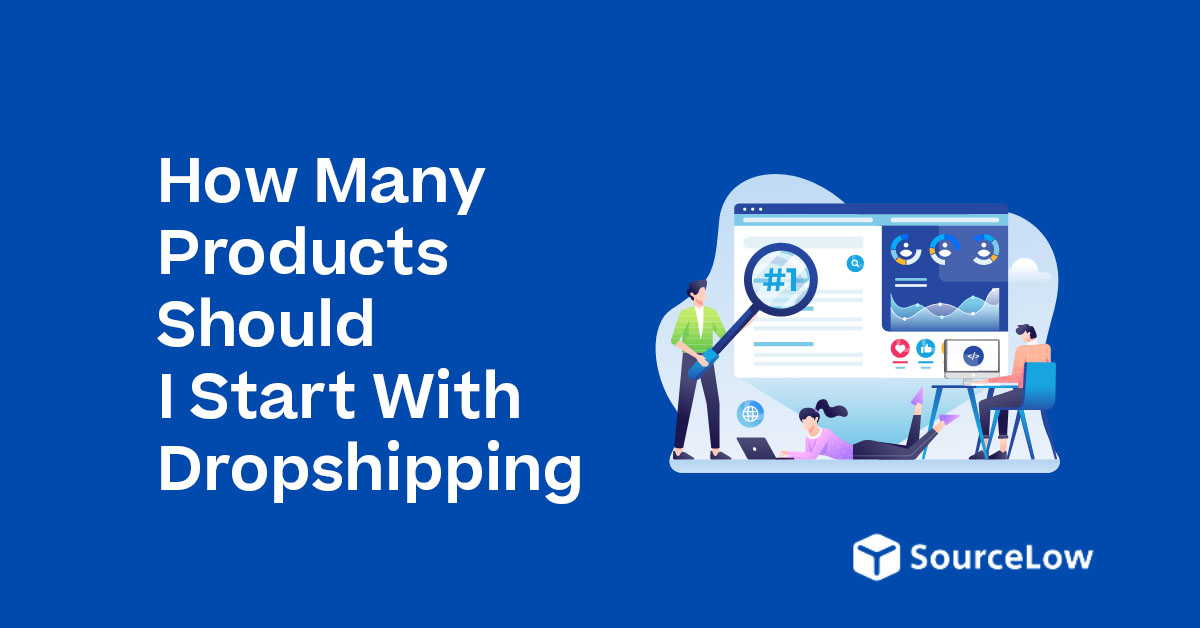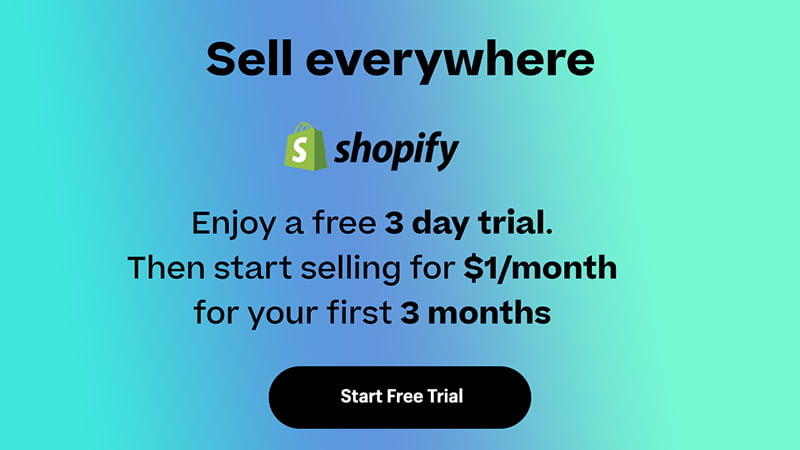Disclosure: We may earn a commission or fee from some of the links in our content. However, this does not affect our recommendations. Learn more.
Quick Answer: If you’re just getting started with dropshipping, begin with 1 to 5 products. This small number gives you the best chance to focus, test efficiently, and avoid getting overwhelmed.
A one-product store or a small niche setup is far more manageable than launching with dozens of untested items.
Many successful dropshippers make their first sales—and even scale to six figures—by focusing on just one winning product before expanding. The key is learning how to test, market, and optimize before going wide.
Why Starting With Fewer Products Makes More Sense
The biggest mistake most beginners make is believing that more products automatically equals more sales.
That assumption couldn’t be further from the truth. In dropshipping, simplicity and speed are your greatest assets, especially when you’re learning how the business works.
Focus on Quality, Not Quantity
Every product you list on your site adds extra work. Each one needs its own:
- Product page
- Images and mockups
- SEO tags and descriptions
- Shipping setup
- Ad creatives and copy
- Audience targeting strategy
Trying to juggle 10–20 products from the start spreads your time thin. You’ll end up doing a mediocre job on all of them instead of doing a great job on one or two.
By contrast, starting with just a few carefully chosen items gives you the space to:
- Run deeper product research
- Create better landing pages
- Optimize your ads faster
- Understand your customer behavior
Less Setup Time, Less Confusion
Let’s face it: dropshipping involves a lot of moving parts. When you’re setting up your first store, you’re dealing with suppliers, shipping policies, marketing, branding, and customer service. You don’t need the extra burden of handling 20+ SKUs right away.
A smaller store also means:
- Fewer customer service issues
- Fewer refund or shipping mix-ups
- Easier branding and messaging
- Cleaner navigation for visitors
Build Momentum Faster
Another benefit of starting lean is you get feedback much faster. Instead of wondering which of 20 products isn’t converting, you know exactly where the problem is.
You can test one product, analyze the results, and make changes quickly.
That kind of speed and focus lets you iterate faster, which is the name of the game in eCommerce.
Three Types of Dropshipping Store Models
Let’s break down the most common product count strategies and what kind of seller each one is best for.
There’s no one-size-fits-all answer, but certain setups do make more sense depending on your goals and resources.
1. The One-Product Store
This type of store focuses entirely on selling a single item. It’s often paired with a highly focused ad campaign and is designed for speed and simplicity.
Best For:
- Beginners with low budgets
- Viral product trends (e.g. TikTok products)
- Fast testing and ad optimization
Advantages:
- Clear and direct branding
- Simple website setup
- All traffic and testing efforts go to one place
Drawbacks:
- High risk if the product doesn’t convert
- No upsell or cross-sell options at launch
Example Setup:
| Product | Price | Supplier Cost | Profit Margin |
|---|---|---|---|
| Mini Portable Air Cooler | $39.99 | $13.50 | $26.49 |
| Shipping | Free (included) | – | – |
Estimated Ad Spend to Test: $300
Goal: Reach breakeven or better on ad spend before scaling
2. The Niche Store (3–5 Products)
This model focuses on a small product line within a single niche. It’s the sweet spot for most beginners who want more flexibility than a one-product store but less complexity than a general store.
Best For:
- Dropshippers testing multiple products in a niche
- Sellers looking to build a brand
- Stores with a clear audience (e.g. pet owners, home fitness, posture health)
Advantages:
- Upselling and bundling opportunities
- More creative testing angles
- Feels more like a real store
Drawbacks:
- Slightly longer setup time
- More moving parts to track
Example Product Mix:
| Product | Price | Supplier Cost | Margin |
|---|---|---|---|
| Back Posture Corrector | $34.99 | $9.90 | $25.09 |
| Lumbar Support Cushion | $29.99 | $7.20 | $22.79 |
| Neck Massager | $44.99 | $13.10 | $31.89 |
Ad Budget Recommendation: $500+
Goal: Test 2–3 ad creatives per product, monitor CTR and ROAS
3. The General Store (10+ Products)
This model includes many unrelated products across multiple niches. While it gives the most variety, it’s also the most difficult to manage and optimize.
Best For:
- Experienced dropshippers
- Those with VA teams or automation tools
- Ad testing at scale
Advantages:
- Flexibility to rotate in/out products
- Good for data collection
- Can catch trends quickly
Drawbacks:
- Confusing store experience
- Difficult ad targeting
- Expensive to test everything
Warning: Not ideal for new sellers unless you’re using it purely as a product testing ground.
What the Data Says: Dropshipping Success by Product Count
You don’t have to guess what works. Let’s look at real-world data from platforms, YouTubers, and surveys that show why fewer products win more often.
Shopify & Oberlo Reports
- Stores with 1–5 products have a conversion rate of 3.1%, compared to 1.6% for stores with 10+ products
- Bounce rates are lower when fewer product options are displayed
- Customer trust increases with niche-focused messaging
Reddit Survey (r/dropship)
A community poll in 2024 found:
| Products at Launch | Success Rate After 90 Days |
|---|---|
| 1–2 Products | 72% still running |
| 3–5 Products | 64% still running |
| 10+ Products | 21% still running |
Key takeaway: Starting with fewer products leads to higher store survival rates.
Case Studies
Jordan Welch (YouTuber):
- Built a one-product store selling a digital writing pad
- Spent ~$600 on ads, hit $5,000 revenue in two weeks
- Scaled the product to over $1M in sales
Biaheza (YouTuber):
- Used a one-product store to sell a posture corrector
- Hit $900,000 in 12 months
- Focused on TikTok traffic, then scaled with Facebook Ads
How to Choose the Right Number of Products for You
Everyone has different strengths, weaknesses, and resources. Here’s how to figure out the right setup based on where you’re at right now.
Consider These Questions:
- Do you have any experience with running paid ads?
- How much time can you dedicate to your store each day?
- Are you working alone or with a team/VA?
- Do you plan to focus on organic traffic or paid traffic?
Suggested Product Counts by Scenario:
| Experience Level | Time Available | Budget | Recommended Product Count |
|---|---|---|---|
| Total Beginner | <10 hours/week | <$500 | 1 Product |
| Beginner w/ Some Experience | 10–20 hrs/week | $500–$1,000 | 3–5 Products |
| Experienced Marketer | Full-time | $2,000+ | 10+ Products |
How to Find the Best Products to Launch With
The number doesn’t matter if the products don’t sell. Here’s a method to find high-potential products for your first store.
Use the Right Tools
- Minea – Spy on TikTok and Facebook ads
- Sell The Trend – Niche explorer and sales data
- Ecomhunt – Curated product ideas with engagement data
- Dropispy – Facebook/Instagram ad tracking
- AliExpress Dropshipping Center – Supplier trends and demand
What to Look For in a Product:
| Feature | Reason It Matters |
|---|---|
| Solves a real problem | Makes it easier to market |
| High perceived value | Lets you price higher |
| Low cost to ship | Keeps profit margins high |
| Eye-catching design | Works well in ads and social |
| Trending or evergreen | Easier to gain traction |
How to Test Products Without Losing Money
Once you’ve picked 1–5 products, the next step is testing them properly. Testing doesn’t need to be expensive, but it does need to be structured.
Budget-Friendly Testing Plan
- Spend $100–150 per product on Meta or TikTok ads
- Run 3–5 creatives per product (use Canva or UGC)
- Launch with broad audience targeting
- Monitor Click-Through Rate (CTR), Add to Cart (ATC), and ROAS
Key Metrics to Watch
| Metric | Healthy Range |
|---|---|
| CTR (Click Through Rate) | 2.5%+ |
| CPC (Cost per Click) | <$1 |
| Add to Cart Rate | 5–10% |
| Purchase ROAS | >1.5x |
Kill, Tweak, or Scale
- No sales after $100? Kill the product
- Break-even performance? Test new angles
- Profitable? Increase ad spend and build retargeting campaigns
When to Add More Products
After your first winning product starts to scale, that’s when it makes sense to add more products.
Scale First, Then Expand
Before you add 5–10 new items, make sure:
- Your current product is generating consistent sales
- Your store has a working upsell or email funnel
- You’ve proven product-market fit with ads or organic traffic
Smart Expansion Strategy
- Add upsells that complement your winner
- Create bundles for higher AOV
- Launch products in the same niche
- Reuse ad creative themes and styles for new products
Final Thoughts: Keep It Simple to Start
Starting with a small number of products isn’t a weakness—it’s actually your best advantage. It keeps your testing lean, your message focused, and your risk low.
Whether you go with one product or five, your goal should be to learn fast, iterate quickly, and scale smart.
When one product starts working, you’ll have more than enough data, customers, and money to grow into a larger store.


